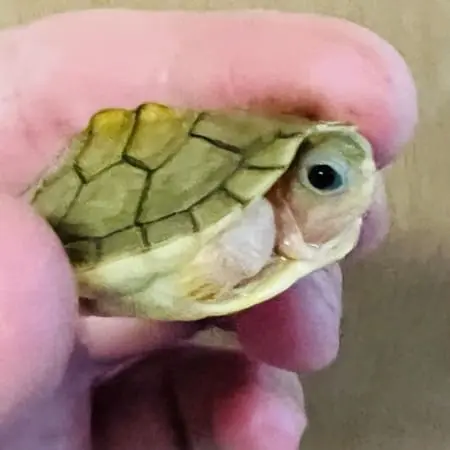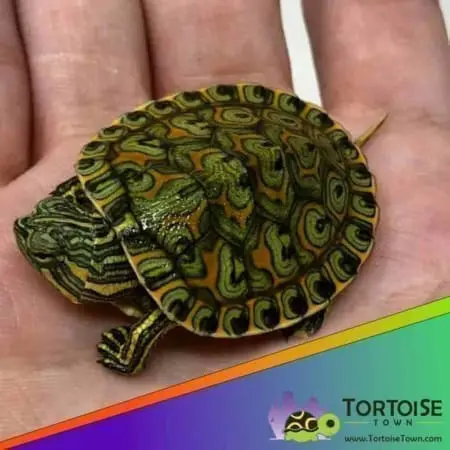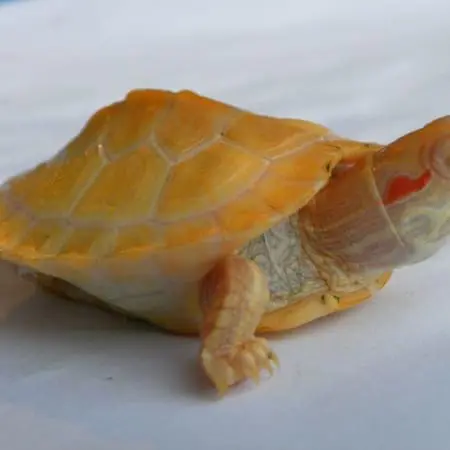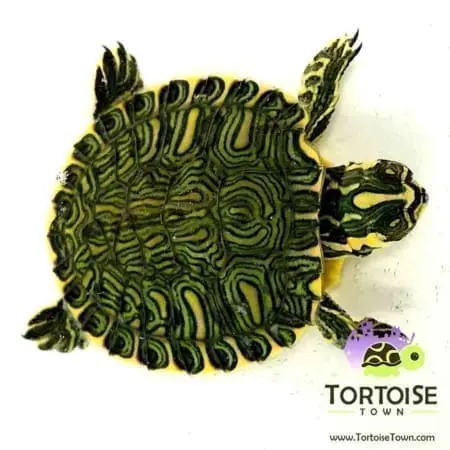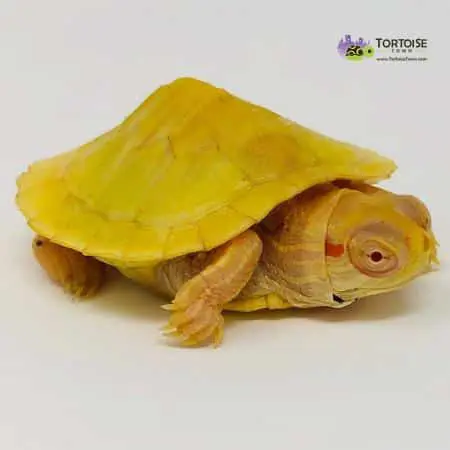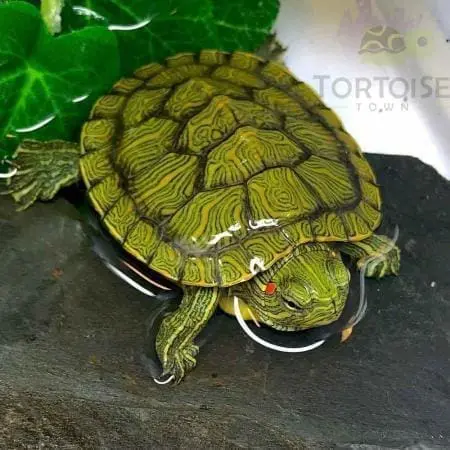Red Eared Slider Turtle UV light
Learn about proper UV lighting and slider turtle basking lamp options.
For indoor setups, most turtle keepers provide UVA and UVB through special fluorescent bulbs. These bulbs are specially manufactured to emit UVB rays and have special glass casings that allow the rays to pass through. They come in different sizes and strengths but produce very little heat since they are low-wattage. It is beneficial to have a bulb that produces approximately 5-10% UVB. These bulbs are generally effective for about 6-10 months and will need replacement afterwards. Fluorescent UVB bulbs do not project UVB very far, so it is necessary to have it positioned closely – 10 inches above the basking area would suffice.
Aquarium hoods, which should have any glass or plastic barrier removed, can hold tube shaped fluorescents. Certain specialized hoods can hold the compact versions as well as basking lights. Compact fluorescents, which resemble energy efficient bulbs, utilize standard sockets and can fit into most light fixtures. These bulbs have a ceramic base, are longer and heavier than an equivalent incandescent light bulb. Extra care needs to be taken to make sure they are installed correctly.
Before purchasing your new slider turtle for sale, doing your proper slider turtle care sheet studying can help you provide the best life for your new red eared slider turtle for sale. When searching the various types of red eared sliders for sale, consider the different slider turtle color morphs available including the albino red eared slider (albino res for sale) as well as the lemon lime albino red eared slider turtle (lemon lime albino res for sale) and the caramel pink red eared slider turtles.
Red eared slider turtles eat a variety of items in the wild and while we can’t exactly mimic these foods exactly for our baby slider turtles, but there are ways that we can provide them with some great nutritious options.
Aquatic turtle pellets are a staple for your red eared slider turtle but they shouldn’t make up the bulk of their diet. Always feed your baby aquatic turtles in water, limit the pellets to make up about 25% of the diet and then make up the rest of the aquatic turtle diet with the following items:
Prey items: Earthworms, crickets, waxworms, silkworms, aquatic snails, bloodworms, daphnia, shrimp, krill, and meal worms. For very small red eared slider turtles, prey may have to be cut into smaller pieces. Larger and adult turtles can be offered larger items like tadpoles or feeder fish, though some experts warn that feeder fish may be carrying parasites, etc. and some fish (like goldfish) are too fatty to be fed regularly.
Leafy greens: Collard greens, mustard greens, dandelion greens, kale, and bok choy. Head (iceberg) lettuce should never be fed as it contains very little nutrition but dark green leaf lettuces (e.g. romaine) can be fed sparingly. Make sure you only feed items with appropriate calcium to phosphorous levels.
Aquatic plants: In both an aquarium or pond you can add aquatic plants on which turtles usually love to snack. Submerged plants like anacharis are often eaten by turtles, as are water hyacinth, water lettuce, duckweed, azolla (fairy moss), and frog-bit.
Other vegetables: Carrots (tops are fine too), squash, and green beans.
Red Eared Slider Turtle Feeding Schedule
Some people choose to feed adult turtles once only every three days while others prefer to stick to smaller meals and continue feeding them daily. No matter which feeding schedule you choose, the important thing is not to over feed your turtle, especially with items high in protein and fat since red eared sliders and other aquatic turtles often have voracious appetites and will beg for food. Some owners describe their pet turtles doing a frantic swim as if trying to fly straight out of the water or staring at them like a dog begs for food.
However often you feed your turtle, be sure to monitor their body condition. If folds of skin are developing around their legs, especially when your turtle pulls their legs into their shell, they are getting too fat and need to be fed smaller amounts, eat less often, or offer food with a lower fat content.
Remember that adult red eared sliders are quite herbivorous so if your turtle seems overly hungry, try feeding more leafy greens and plant material rather than aquatic turtle pellets or prey food items.
When setting up your new red eared slider turtle tank, consider having 10 gallons of water per inch of turtle as a general rule of thumb but a 20 gallon tank is a minimum size for hatchling red eared sliders.
Keeping in mind that red eared sliders can read 10-12 inches as adults, you can see that eventually you will need a very large tank. Large plastic containers or storage tubs are good alternatives to aquariums as long as you don’t mind not being able to view the turtles from the side. As long as the container is tall enough and the basking area is positioned so that the turtles can’t climb out of it you won’t need a lid.
The basking area for your turtle can be provided by stacking smooth rocks, sloping smooth, large gravel to one side to make a land area, using wood, or a plastic “turtle dock.” Whatever you choose to construct a basking spot, make sure your turtle can climb onto it easily and that it allows your turtle to completely dry off
The water in a red eared slider turtle tank should be kept at 75-78 degrees Fahrenheit (23-26 degrees Celsius), and 78-80 degrees Fahrenheit (26-27 degrees Celsius) for hatchlings.
Red Ear Sliders for sale are the most common aquatic turtle for sale and can live for up to 50 years in captivity. Red Ear Sliders are very active and love to swim. While they are mostly aquatic, these diurnal turtles also enjoy a dry, warm place where they can climb out and bask under a heat light. A great habitat would be a large aquarium. A filter is recommended to help keep the water clean, and you will want to include an assortment of rocks, ramps, docks or other turtle accessories to provide ample space for climbing. A garden or outdoor pond is another common habitat solution for Red Ear Sliders. Turtles are social animals and can be kept together as long as
When choosing any red ear slider turtle for sale or any turtle for sale it is important that you purchase a healthy animal from an experienced turtle breeder. Captive bred red eared slider turtles for sale should always be purchased over a wild caught adults when possible. With a biologist ON SITE, our red ear slider turtle for sale are top notch and ready to ship to you via FedEx Overnight in heated or cooled, insulated shipping boxes and come with our live arrival and full 7 day health guarantee. One shipping charge covers up to 4 turtles or tortoises. Remember when searching for any tortoises for sale, including a new baby tortoise for sale, tortoise town is your source for the best tortoise for sale , baby tortoises for sale , baby turtles for sale, and adult turtles for sale of any turtle store anywhere. If you are interested in tortoise care, please visit our care section.

